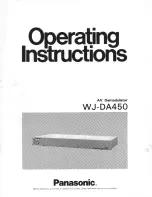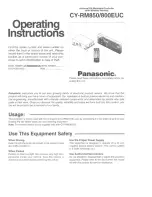
254 Appendix E: A Detailed Look at
f
In many cases you will be familiar enough with the function you want to
integrate that you’ll know whether the function has any quick wiggles
relative to the interval of integration. If you're not familiar with the
function, and you have reason to suspect that it may cause problems, you
can quickly plot a few points by evaluating the function using the
subroutine you wrote for that purpose.
If for any reason, after obtaining an approximation to an integral, you have
reason to suspect its validity, there's a very simple procedure you can use to
verify it: subdivide the interval of integration into two or more adjacent
subintervals, integrate the function over each subinterval, then add the
resulting approximations. This causes the function to be sampled at a brand
new set of sample points, thereby more likely revealing any previously
hidden spikes. If the initial approximation was valid, it will equal the sum of
the approximations over the subintervals.
Conditions That Prolong Calculation Time
In the preceding example (page 251), you saw that the algorithm gave an
incorrect answer because it never detected the spike in the function. This
happened because the variation in the function was too quick relative to the
width of the interval of integration. If the width of the interval were smaller,
you would get the correct answer; but it would take a very long time if the
interval were still too wide.
For certain integrals such as the one in that example, calculating the integral
may be unduly prolonged because the width of the interval of integration is
too large relative to certain features of the functions being integrated.
Consider an integral where the interval of integration is wide enough to
require excessive calculation time but not so wide that it would be
calculated incorrectly. Note that because
f(x)
=
xe
-x
approaches zero very
quickly as
x
approaches
, the contribution to the integral of the function at
large values of
x
is negligible. Therefore, you can evaluate the integral by
replacing
, the upper limit of integration, by a number not so large as 10
99
,
say 10
3
.
Summary of Contents for HP-15C
Page 1: ...HP 15C Owner s Handbook HP Part Number 00015 90001 Edition 2 4 Sep 2011 ...
Page 17: ...Part l HP 15C Fundamentals ...
Page 64: ......
Page 65: ...Part ll HP 15C Programming ...
Page 118: ...118 ...














































